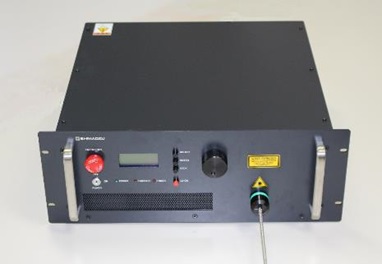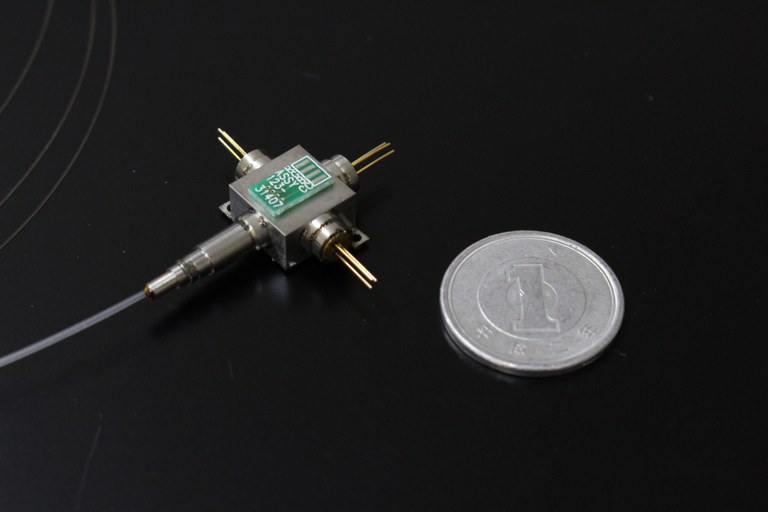2016-3-14
As part of a NEDO project (“Clean Device Promotion Project/Establishment of Infrastructure for Applications of Most Advanced Visible Laser Diode Devices”), Osaka University and Shimadzu Corporation have developed two new types of RGB laser light source modules, including a world-class high-brightness model and an ultra-miniaturized model, and demonstrated their effectiveness mounted on actual devices with the aim of expanding the application of visible light laser diodes.
In addition, an industry-university consortium coordinated by Osaka University has been established to develop guidelines for safety and related issues with regards to the new light sources. In the future, the consortium aims to promote new industrial applications by continuing activities related to practical use and dissemination of the technology, promoting awareness of the guidelines and supporting international standards development.
The first model (see Figure 2) realizes the world’s best-in-class brightness for use in high-brightness laser display devices and laser lighting, while the second model is the world’s smallest ultra-miniaturized model capable of single-mode fiber output for use in scanning-type laser displays (see Figure 1).

Figure 2. World-Class High-Brightness RGB Laser Light Source Module Implementation
As a result of an evaluation of these modules by embedding them in devices from nine equipment makers, the lasers were shown to be superior in the categories of miniaturization, energy-saving performance, and color gamut compared to other light sources such as LEDs.
With the special characteristics of these lasers, we expect a wide range of potential applications from use in small-sized electronic devices such as smartphones and tablet devices to large video systems including theaters at the scale of tens of meters and projection mapping and aim to implement the technology in these devices.
Also, in order to address laser-specific challenges and safety issues that need be solved for practical use and dissemination of the technology, the Consortium of Visible Laser Diode Applications established by Osaka University (Photon Pioneers Center Vice Director/Specially Appointed Professor Kazuhisa Yamamoto) in 2014 recently developed performance standards and safety and reliability guidelines for RGB laser light source modules to provide the foundation for the application of visible light laser diodes. In the future, the consortium aims to promote new industrial applications by continuing activities related to practical use and dissemination of the technology, promoting awareness of the guidelines and supporting international standards development.












